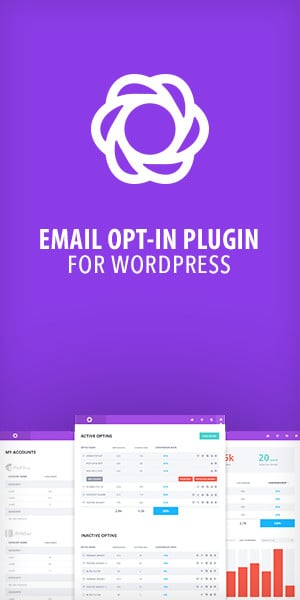If you’re like most marketers, you’re constantly looking for ways to improve your email campaigns. One of the best ways to do that is by analyzing your campaign performance. By analyzing your campaign data, you can gain valuable insights into what’s working and what’s not, so you can make informed decisions about how to improve your campaigns.
There are many different metrics you can use to analyze your email campaign performance. Some of the most important include open rates, click-through rates, conversion rates, and engagement rates. Open rates tell you how many people are opening your emails, while click-through rates tell you how many people are clicking on the links in your emails. Conversion rates tell you how many people are taking the desired action after clicking on your links, while engagement rates tell you how engaged your subscribers are with your content. By tracking these metrics over time, you can identify trends and make data-driven decisions about how to optimize your campaigns for better results.
Key Metrics for Campaign Analysis
When analyzing the performance of your email campaigns, it’s important to track certain key metrics that can give you insights into how your campaign is performing and how you can improve it. Here are some of the most important metrics to track:
Open Rate
The open rate is the percentage of people who opened your email out of the total number of people who received it. It’s an important metric because it tells you how effective your subject line and preheader text are at getting people to open your email. A low open rate can indicate that your subject line or preheader text needs improvement.
To improve your open rate, you can try A/B testing different subject lines and preheader text to see which ones perform best. You can also try segmenting your email list and sending more targeted emails to specific groups of subscribers.
Click-Through Rate
The click-through rate (CTR) is the percentage of people who clicked on a link in your email out of the total number of people who received it. It’s a measure of how engaging your content is and how well your call-to-action is working.
To improve your CTR, you can try A/B testing different calls-to-action and different placements of your links within the email. You can also try personalizing your emails and segmenting your email list to send more targeted content to specific groups of subscribers.
Conversion Rate
The conversion rate is the percentage of people who completed a desired action, such as making a purchase or filling out a form, after clicking on a link in your email. It’s the ultimate measure of success for your email campaign.
To improve your conversion rate, you can try A/B testing different landing pages and different offers. You can also try segmenting your email list and sending more targeted emails to specific groups of subscribers based on their interests and behavior.
Bounce Rate
The bounce rate is the percentage of emails that were undeliverable and returned to the sender. A high bounce rate can indicate that your email list needs cleaning or that your emails are being flagged as spam.
To reduce your bounce rate, you can regularly clean your email list by removing inactive subscribers and invalid email addresses. You can also try improving your email authentication and compliance with email marketing best practices.
Unsubscribe Rate
The unsubscribe rate is the percentage of people who unsubscribed from your email list after receiving your email. It’s a measure of how relevant and valuable your content is to your subscribers.
To reduce your unsubscribe rate, you can try segmenting your email list and sending more targeted content to specific groups of subscribers. You can also try improving your email frequency and giving subscribers the option to choose the frequency and type of emails they receive.
Strategies for Improvement
Improving your email campaign performance requires a combination of tactics. Here are five strategies to consider:
Segmentation Tactics
Segmenting your email list is a powerful way to improve your email campaign performance. By dividing your email list into smaller groups based on demographics, interests, or behaviors, you can tailor your content to each group’s specific needs and interests. This can lead to higher engagement rates and conversions.
Consider segmenting your list based on factors such as age, gender, location, purchase history, and website behavior. You can also segment your list based on engagement levels, such as subscribers who have opened or clicked on your emails in the past.
A/B Testing
A/B testing, also known as split testing, is a method of comparing two versions of an email to see which one performs better. By testing different elements of your emails, such as subject lines, calls to action, or images, you can optimize your campaigns for better results.
When conducting A/B tests, make sure to test one variable at a time and use a large enough sample size to ensure statistical significance. Keep track of your results and use them to inform future campaigns.
Timing and Frequency
The timing and frequency of your emails can have a significant impact on their performance. Experiment with sending emails at different times of day and days of the week to see when your subscribers are most active.
Be mindful of the frequency of your emails as well. Sending too many emails can lead to subscriber fatigue and high unsubscribe rates. On the other hand, sending too few emails can cause subscribers to forget about your brand.
Content Personalization
Personalizing your emails can help increase engagement and conversions. Use subscriber data to include personalized content in your emails, such as product recommendations, location-based offers, or birthday messages.
You can also use dynamic content to show different content to different subscribers based on their interests or behaviors. For example, you could show different product recommendations to subscribers who have previously purchased different products.
Call to Action Optimization
Your call to action (CTA) is one of the most important elements of your email. Make sure your CTA is clear, compelling, and easy to find. Use action-oriented language and consider using urgency or scarcity tactics to encourage clicks.
Experiment with different CTA placements, such as at the beginning or end of your email, or in the middle of your content. You can also test different CTA designs and colors to see which ones perform best.
By implementing these strategies, you can improve your email campaign performance and achieve better results.
Frequently Asked Questions
What metrics are crucial for assessing the success of an email marketing campaign?
Several metrics are crucial for assessing the success of an email marketing campaign. These include open rates, click-through rates (CTR), conversion rates, bounce rates, and unsubscribe rates. Open rates indicate how many recipients opened your email, while CTR measures how many recipients clicked on a link in your email. Conversion rates indicate how many recipients took the desired action, such as making a purchase or filling out a form. Bounce rates indicate how many emails were undeliverable, while unsubscribe rates indicate how many recipients opted out of your email list.
Which analytics tools are recommended for monitoring email marketing performance?
There are many analytics tools available for monitoring email marketing performance. Some popular options include HubSpot, Campaign Monitor, and Mailchimp. These tools provide detailed reports on email campaign performance, including metrics such as open rates, CTR, and conversion rates. They also allow you to segment your email list and track the performance of specific campaigns.
How can one benchmark email marketing metrics against industry standards?
Benchmarking email marketing metrics against industry standards can help you understand how your campaigns are performing compared to other companies in your industry. Some sources for industry benchmarks include Mailchimp’s Email Marketing Benchmarks and Campaign Monitor’s Email Marketing Metrics Benchmark. It’s important to keep in mind that benchmarks can vary depending on factors such as industry, audience, and email content.
What examples illustrate effective analysis of email campaign performance?
Effective analysis of email campaign performance involves looking at the metrics that matter most to your business goals and making data-driven decisions based on those metrics. For example, if your goal is to increase sales, you might analyze conversion rates and revenue generated from each email campaign. If your goal is to increase engagement, you might analyze open rates and CTR. Effective analysis also involves testing different email elements, such as subject lines and call-to-action buttons, to see what works best for your audience.
In what ways can the effectiveness of an email campaign be measured?
The effectiveness of an email campaign can be measured in several ways. One way is to track key metrics such as open rates, CTR, and conversion rates. Another way is to conduct A/B testing, where you test different email elements to see what resonates best with your audience. You can also measure the effectiveness of an email campaign by tracking revenue generated from each campaign or by analyzing customer feedback and engagement.
What are the key performance indicators (KPIs) for a successful email marketing strategy?
The key performance indicators (KPIs) for a successful email marketing strategy depend on your business goals. Some common KPIs include open rates, CTR, conversion rates, revenue generated, and subscriber growth. It’s important to choose KPIs that align with your business objectives and track them consistently over time. By analyzing your KPIs, you can make data-driven decisions to optimize your email marketing strategy and achieve your goals.




